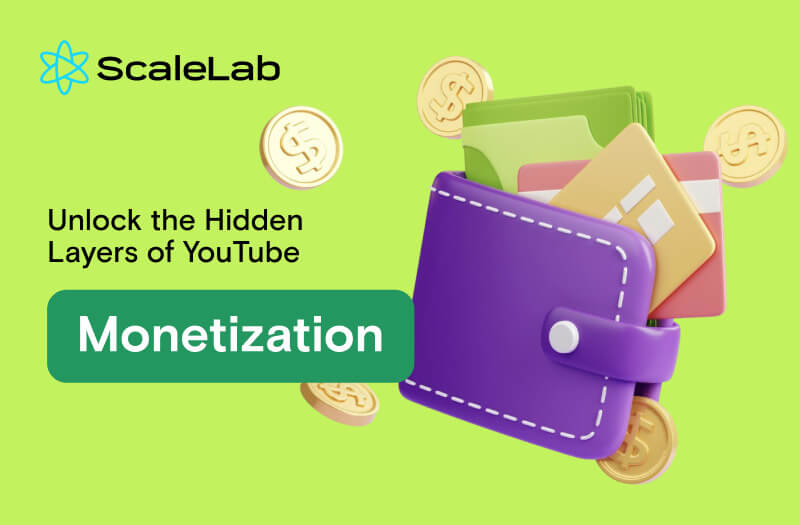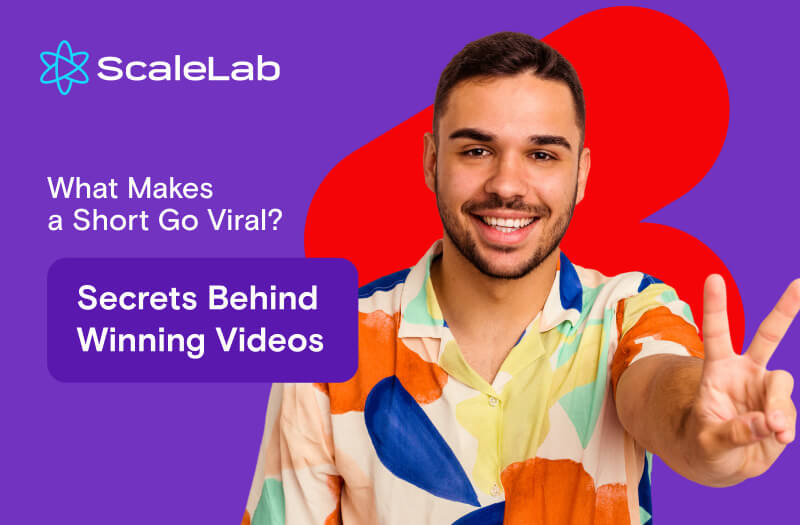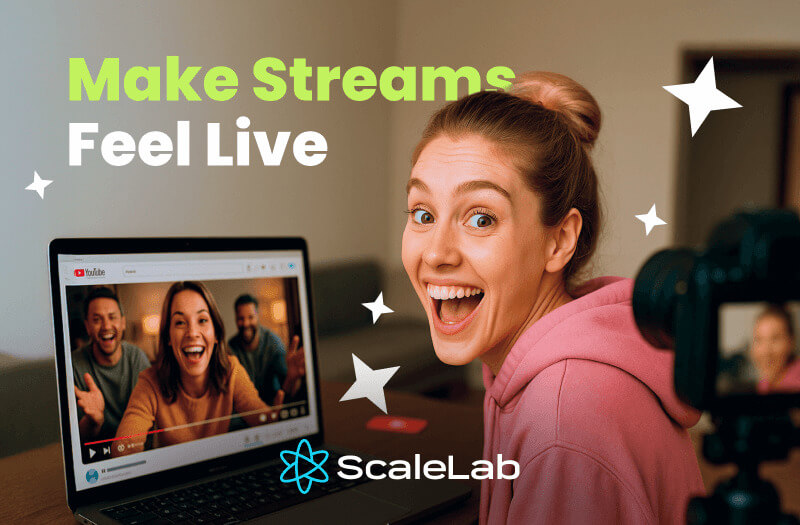That’s the technical side of YouTube, but every creator needs to understand YouTube SEO as fast as possible. It focuses on making content easy to find, clear to understand, and difficult to ignore. And most channels don’t need more content. They need better visibility for the content they already have.
SEO is giving your videos the best chance to be discovered, clicked on, and watched by the right people.
Here’s what it is, how it works, and how to apply it effectively.
What SEO for YouTube Means
SEO strategy for YouTube involves more than adding keywords to titles or copying tags from a top video. It’s helping YouTube understand who your video is for. The better YouTube understands your content, the more confidently it can recommend it.
This includes:
- Choosing topics that people are already searching for.
- Using relevant language in titles, descriptions, and spoken content.
- Structuring metadata so YouTube can connect your video to similar content.
- Keeping viewers engaged so the algorithm trusts your content.
It’s a combination of what you say, how you say it, and how long people stay engaged with your video. That’s YouTube discoverability tactics, which explains that it’s about aligning your video metadata, audience needs, and YouTube’s algorithm.
Latest Updates in YouTube and Google SEO
Here are the latest official updates on YouTube SEO and algorithm changes.
YouTube Algorithm Updates
YouTube's algorithm continues to evolve to better match viewers with content they want to watch. Recent changes have impacted how videos are recommended and discovered, leading to fluctuations in views for some creators.
These adjustments aim to enhance user experience by prioritizing content that aligns more closely with viewer preferences.
Think of YouTube SEO less as “hacking” the algorithm and more as “matching intent.” Optimize titles, descriptions, and thumbnails for clarity and relevance. Engagement signals (watch time, click-through, comments) are now even more critical, so SEO is about whether your video actually satisfies the viewer.
Core Web Vitals and Page Experience
Google's June 2025 Core Update emphasized the importance of Core Web Vitals and overall page experience in search rankings.
This update affects how content is evaluated for both search and video platforms, underscoring the need for creators to focus on user experience metrics such as loading performance, interactivity, and visual stability.
If your site or video landing pages are slow or glitchy, you’ll rank lower. For creators, this means making sure your channel site or blog loads fast, doesn’t jump around when scrolling, and is easy to use on mobile. Clean UX = better SEO visibility.
AI-Powered Campaign Enhancements
At Google Marketing Live 2025, new AI-driven features were introduced to improve campaign performance across platforms, including YouTube.
These enhancements offer more visibility and control, allowing advertisers to understand better how their ads perform across different channels and optimize their campaigns accordingly.
Ad targeting is getting smarter, which indirectly affects organic SEO. If you’re running campaigns, AI can help you see which audiences respond best. Then you can mirror that insight in your organic video topics, titles, and keywords.
Performance Max Campaign Insights
Performance Max campaigns now provide channel-level performance reporting, enabling advertisers to understand how their ads are delivering results across Google's full range of channels and inventory.
Even if you don’t rely heavily on ads, these reports show where audiences hang out (YouTube, Discover, Search, Maps, etc.). Use that knowledge to double down on SEO where your viewers already are.
Structured Data Updates
In September 2025, Google removed documentation for several deprecated structured data types, including course info and vehicle listings.
This change reflects a shift in how Google handles structured data, and creators should ensure they are using supported types to maintain visibility in search results.
Structured data is like a translator between your content and Google. If you’re using old or unsupported markup, Google ignores it. Stick to the current schema types (like VideoObject, Article, FAQ) to keep rich snippets and video features in search results.
For more detailed information and updates, you can visit the Google Search Central Blog and the YouTube Help Center.
How to Use YouTube SEO
Let's take a look at several YouTube SEO tips.

Start Before You Press Record
SEO doesn’t begin when you upload your video. It starts when you pick your topic.
Before hitting record, ask yourself: What are people searching for?
Open YouTube’s search bar and start typing what you think people want. Watch what YouTube suggests. That’s real data.
If “how to fix camera blur” appears, that means people are looking for it. Use that phrase as your video idea, and structure your video around it. Mention it in your title, description, and on-camera.
This approach to video keyword research works best when done early. This is especially in line with YouTube’s search algorithm that focuses on keywords in video titles, descriptions, and tags.
Use Natural Language in Titles and Descriptions
Forget robotic titles. Today, the best titles speak to humans first, and algorithms second. You want relevance, but you also want curiosity. You want search terms, but you want to evoke emotion.
A title like “How I Fixed My Camera Blur (After 3 Years of Struggling)” works better.
Your title, description, and thumbnail work together. They help you rank your YouTube videos and, more importantly, encourage viewers to click. The platform encourages this approach, where click-through rate (CTR) is a key metric for YouTube video ranking.
Make Metadata Clear and Consistent
Let’s talk metadata, and even the words you say in your video. YouTube scans it all: titles, descriptions, captions, even the filename (though don’t overthink that).
You need to optimize your YouTube metadata. Say your keyword early in the title. Repeat it naturally in the description. Mention it in the first 30 seconds of your video.
YouTube tags and titles need to be relevant, not copied from a competitor. This consistent approach signals to YouTube that your content is trustworthy and aligned with the topic.
How to Nail YouTube Metadata
Think of metadata as your handshake with YouTube’s algorithm. If it’s clear and confident, you’ll get recommended more often. So, let’s start here.
0. Quick Prep (2 minutes)
Before you type anything:
- Primary keyword: what your ideal viewer would search (e.g., “minecraft iron farm 1.21”).
- Intent: tutorial, review, vs. news (this changes your title pattern).
- Entities & variants: brand/model/version and close variants (“iPhone 15 camera settings,” “iPhone 15 Pro camera tips”).
- Outcome: the result the viewer gets (“no more blurry shots,” “iron per hour,” “authentic carbonara”).
1. Title (clear, specific, intent-matched)
Formula:
[Outcome/Hook] + [Exact Keyword/Entity] + [Qualifier]
Rules
- Put the exact keyword near the start.
- Promise a result (and deliver it).
- Avoid brackets spam or keyword stuffing.
Good vs. bad
- ✅ “Build a 1.21 Iron Farm (Easy, No Villager Trading)”
- ❌ “INSANE!! BEST FARM EVER!!! (READ DESC)”
- ✅ “iPhone 15 Camera Settings for Crisp Video (No Fancy Gear)”
- ❌ “Some Thoughts on the iPhone”
2. Description (first 150 chars matter most)
Structure
- Line 1-2: Natural sentence with the exact keyword + outcome.
- Body (3-6 lines): What’s inside, who it’s for, key steps, 1-2 related variants.
- Chapters: Clear, keyworded chapter names.
- CTA: 1 simple action (watch next / subscribe / resource link).
YouTube Description Template
[1-2 lines intro]
If you’re looking for {primary keyword}, this guide shows you {outcome} in {time/steps}, even if {objection}.
What you’ll learn: {3-4 specifics with natural keyword variants}.
Chapters:
00:00 Intro
00:31 {keyword variant} overview
02:15 {key step}
05:42 {troubleshooting|settings}
08:10 Final result
Next watch: {related video title}
3. Say the Keyword On-Camera (first 30 seconds)
YouTube parses captions/transcripts since 2025 more thoroughly. Script your first lines so they naturally include the keyword and outcome.
Script starters
- “Today I’ll show you how to build a Minecraft iron farm in 1.21 that prints 340 iron/hour…”
- “If you just got an iPhone 15 and want the best camera settings for YouTube and TikTok, here’s the setup pros actually use…”
4. Tags (supporting, not stuffing)
- Use 5-12 tags: exact keyword, close variants, entity names, common misspellings.
- Add context tags (version, region, format: “how to,” “review,” “1.21,” “Pro Max”).
- Don’t repeat the same phrase 10 ways.
Example tags (camera settings)
iPhone 15 camera settings, iPhone 15 Pro camera tips, iPhone 15 video settings, best iPhone
5. Chapters (mini-SEO inside your video)
- Add chapters with clear, descriptive names (include 1-2 keyword variants).
- Put the most important search phrases in the first 2-3 chapters.
Let’s go through the chapter section examples for different niches
Tech (iPhone 15 Camera Settings)
00:00 iPhone 15 camera settings overview
00:31 Quick setup (resolution, frame rate)
01:20 Stabilization settings (Standard vs Action)
02:15 HDR video vs SDR (what to choose)
03:10 Color profiles & white balance
04:05 Skin tones: exposure & tone mapping
05:00 Low-light fixes (noise & flicker)
06:05 Mic settings & external audio
07:00 Export settings for YouTube/TikTok
08:00 Troubleshooting (grainy footage, banding)
Gaming (Minecraft 1.21 Iron Farm)
00:00 Iron farm 1.21: rates & footprint
00:30 Materials list (cheap build)
01:10 Villager setup (fast method)
02:00 Zombie placement & aggro range
03:00 Spawn platform layout (safe spacing)
04:00 AFK spot & chunk alignment
05:00 Overflow & storage (hopper chains)
05:40 Performance tips (lag, spawn caps)
06:20 Troubleshooting (no spawns, panic)
Cooking (Authentic Carbonara)
00:00 Carbonara basics (no cream)
00:28 Ingredients & ratios (egg/pecorino/guanciale)
01:10 Guanciale: render & crisp (not dry)
02:05 Pasta water: starch & salinity
02:45 Emulsion off-heat (silky, no scramble)
03:40 Pepper bloom & finishing
04:20 Plate & serve (texture check)
05:00 Mistakes to avoid (cream, bacon, heat)
Vlog / Storytime (Travel)
00:00 Hook & route overview
00:25 Budget & transport tips
01:05 Day 1 highlights (must-see spots)
02:00 Food map (local staples)
02:45 Safety & scams to avoid
03:20 Where to stay (areas that work)
04:00 Packing list & weather gotchas
04:40 Itinerary download/Google Map
Use Captions
YouTube’s AI is powerful, but clarity is a must.
Add captions, even if they’re auto-generated. Clean them up, and make sure your keywords appear where they make sense.
Timestamps and chapters not only make your video easier to navigate, but they also help with indexing. And they can increase video visibility in non-YouTube search results.
- Upload your own srt/vtt captions rather than relying purely on auto-captions.
- During editing, listen for mispronounced or auto-transcribed mistakes (especially product names, versions, numbers), and fix those.
- In the first 30 seconds, don’t bury the keyword, mention it clearly so both captions and spoken word lead with it.
- If you have an audience that spans regions or languages, consider translated captions or subtitles to widen reach.
- Avoid “caption overload”: long pauses or filler (“um,” “uh,” etc.) are fine but don’t force unnatural keyword insertions just for the sake of caption SEO.
- Ensure formatting is clean: correct timestamps, line breaks at logical places, and avoid mid-sentence cutoffs that confuse both viewers and the algorithm.
Adding accurate captions and timestamps provides YouTube's algorithm with better metadata, improving discoverability.
Need help growing your channel?
We’ve got you covered. Whether it’s SEO, strategy, or optimization, reach out and let’s boost your YouTube success.
Talk to Your Audience Like You Know Them
SEO also means relevance for your viewers.
Know your audience’s frustrations. What problem are they solving when they search for your content?
When your video answers those questions directly, the algorithm knows. Your viewers stick around longer, helping both you and the algorithm. YouTube’s audience retention metrics are very important in this process, showing that the more engaged your audience is, the better your ranking.
Measure What Matters
Focus on what helps you rank, not just views.
Watch time and retention are key. YouTube wants to keep viewers on the platform. If your video engages them for longer, it’s rewarded.
Look at:
- Click-through rate (is your title and thumbnail drawing people in?)
- Average view duration (are viewers staying with you?)
- Audience retention graph (where are viewers dropping off?)
SEO is also about keeping viewers watching.
Video optimization for YouTube needs to focus on long-term engagement, making sure that viewers return to watch your videos, and improving your overall rankings.
The Role of Thumbnails in SEO
Your thumbnail is a part of YouTube SEO. Thumbnails influence click-through rate, and CTR plays a major role in ranking.
Design with purpose:
- Bold, easy-to-read text.
- High contrast.
- Clear emotion or intrigue.
- A visual hook that tells the story in 1 second.
Thumbnails are part of the user experience, and YouTube's algorithm heavily weighs them in ranking decisions.
Optimize Old Videos (Seriously)
Old videos can become a real generator of new videos if they are optimized correctly.
Go back to videos with decent watch time, but poor CTR. Change the thumbnail, adjust the title, and watch the results. Update descriptions with relevant keywords. Add chapters. Pin a comment with a link to a newer video.
SEO doesn’t stop after the upload. Keep improving. YouTube search optimization for old content emphasizes the importance of updating videos as part of an ongoing strategy to stay relevant.
Recommended and Search
Ranking in YouTube search is great, but recommended traffic is where the real growth happens.
Search is intent-based. Viewers actively look for your content.
Recommended is an algorithm-based. YouTube suggests your video to users who aren’t actively searching.
You want your content to fit into trends, encourage binge-watching, and boost session watch time. That’s how you end up on the "Up Next" sidebar.

YouTube Algorithm = Viewer First
At the core of YouTube SEO is one simple truth: the algorithm follows the viewers.
If your content:
- Gets clicked
- Keeps viewers engaged
- Leads to more video views from your channel
...then YouTube rewards you with more reach.
YouTube SEO starts with making videos for your audience, not the algorithm. The algorithm simply follows where your audience goes.
ScaleLab works with creators like you to increase visibility, refine SEO strategies, and unlock growth opportunities. We’ll help you build a plan that fits your content, your niche, and your audience.
Want to stop guessing and start growing? Reach out to us, and make your videos easier to find and impossible to ignore.



